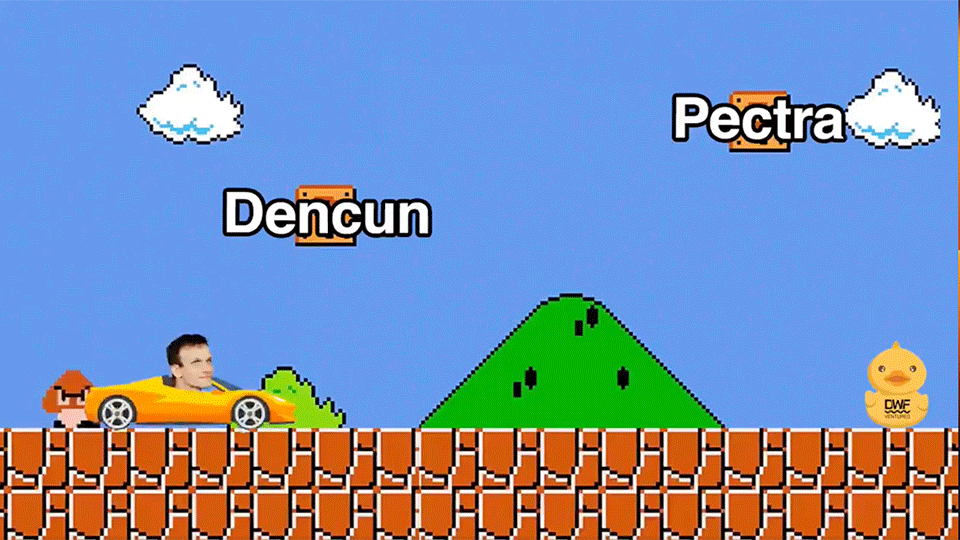
- Details
With the approval of the Ethereum exchange-traded fund (ETF), market sentiment surrounding Ethereum has surged to new highs.
Following the recent Dencun upgrade, Ethereum is set to introduce the Pectra upgrade in Q1 2025. This article highlights the key Ethereum Improvement Proposals (EIPs) that are expected to play a pivotal role in the long-term advancement of the Ethereum protocol.
Key EIPs in the Pectra Upgrade
Here is the list of the primary EIPs to be rolled out within the Pectra upgrade:
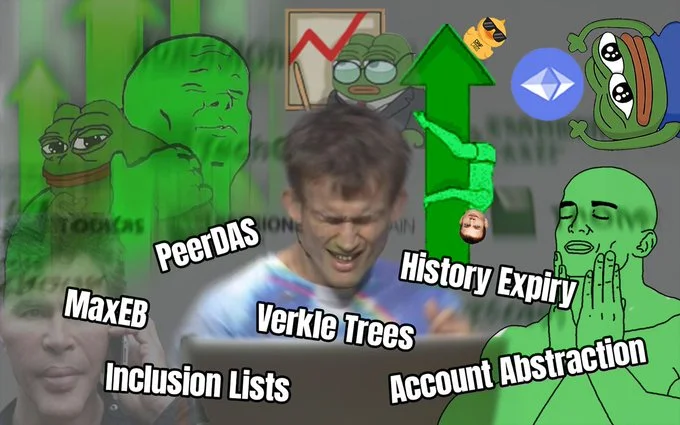
Read further for a more detailed breakdown of these proposals.
PeerDAS (EIP-7594)
The cornerstone of the Pectra upgrade is the EVM Object Format (EOF), which includes 11 EIPs introducing an “opt-in” container system for EVM code. Among these, PeerDAS has been a key focus in Ethereum’s All Core Devs Consensus (ACDC) calls and Vitalik Buterin’s writings.
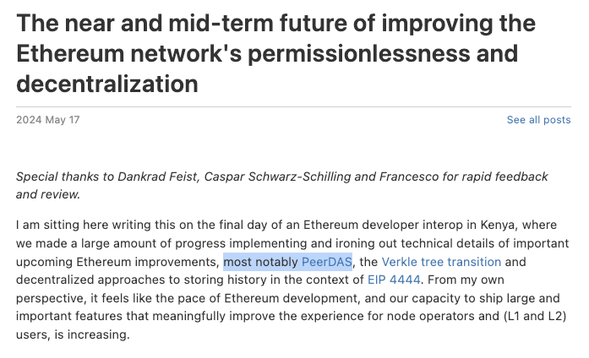
PeerDAS simplifies data availability sampling by leveraging Ethereum’s existing peer-to-peer components. This extension of data availability scaling, building on EIP-4844, which implemented Proto-Danksharding, addresses the increasing need for efficient data handling, particularly in Layer 2 (L2) protocols.
MaxEB (EIP-7251)
EIP-7251, or “Increase Max Effective Balance (MaxEB),” aims to optimise Ethereum’s validator network by lifting the maximum staking amount per validator from 32 ETH to 2048 ETH. This enhancement reduces network redundancy and streamlines validator operations, contributing to Ethereum’s scalability.
Verkle Trees Transition (EIP-6800)
As part of Ethereum’s Verge roadmap, EIP-6800 introduces Verkle Trees to replace the current Merkle Tree structure. This transition is designed to enable “statelessness” in Ethereum, meaning nodes on the network can process and verify transactions without needing to store the full blockchain state. Verkle Trees uses polynomial commitment which allows the witness to have a fixed size regardless of the number of leaves that it proves, thus, reducing proof sizes and enhancing the efficiency of light nodes. With this, users will face lower hardware requirements, making it simpler to run light nodes and securely verify the blockchain. Achieving this milestone will significantly optimise Ethereum’s resource usage.

History Expiry (EIP-4444)
EIP-4444 addresses data management within the Ethereum network by obligating blockchain nodes to discard data older than one year, as the growing size of Ethereum’s blockchain data, which is facing challenges like high storage requirements and long synchronisation times. By proposing this, as discussed extensively in Ethereum’s ACDC calls, it reduces hardware requirements for validators, making node operation more accessible while preserving historical records through archive nodes and thus cost-effective.
EOA Account Code for Transaction (EIP-7702)
One of the key Pectra’s proposals, EIP-7702 adds a long-awaited smart contract functionality to Externally Owned Accounts (EOAs). EOAs are known as basic Ethereum accounts controlled by private keys, used to send and receive ETH or tokens and interact with smart contracts. However, unlike smart contracts, they are not programmable and cannot perform advanced operations with complex logic. A solution formulated in the EIP-7702 has been set to address this critical limitation.
Co-authored by Vitalik Buterin, EIP-7702 introduces new opcodes to set up a novel transaction type that allows an EOA to temporarily act as a smart contract during transactions, bringing more programmability for Ethereum addresses and wallets. In particular, it enables features such as transaction batching (grouping multiple transfer into a single operation), gas fee sponsorship (paying user fees by a third party), and privilege de-escalation (an option to reduce permissions in certain actions, for better security).
EIP-7702 also enhances security, quantum resistance, and compatibility with other proposals such as EIP-4337.
Inclusion Lists (EIP-7547)
In the inclusion list paradigm, a proposer provides an inclusion list, i.e. a list of transactions that they demand must be included in the block, unless the builder can fill a block completely with other transactions.
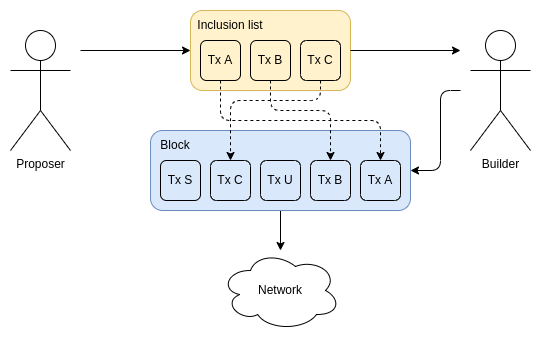
Endorsed by Vitalik Buterin in recent discussions, Inclusion Lists address issues related to Maximal Extractable Value (MEV). By mandating that block builders include specified transactions when proposing blocks, this EIP prevents builders from excluding certain transactions, ensuring a fairer block inclusion process.
A Path Forward for Ethereum?
Ethereum’s continuous upgrades reflect its commitment to scalability, efficiency, and decentralisation. The Pectra upgrade scheduled for Q1 2025, promises to bring major changes to this leading blockchain.
EIP-7594 improves data availability sampling for Layer 2 solutions, while EIP-7251 increases validator staking limits, streamlining operations. EIP-6800 and EIP-4444 reduce hardware requirements through Verkle Trees and data pruning, making node operation more accessible. Additionally, EIP-7702 enables EOAs to temporarily act as smart contract wallets, and EIP-7547 ensures fair transaction inclusion by addressing MEV issues. However, it remains to be seen whether these promises will hold.
We commit to supporting and investing in Web3 projects built on Ethereum’s EVM ecosystem. Reach out to DWF Ventures via contact form for further details.
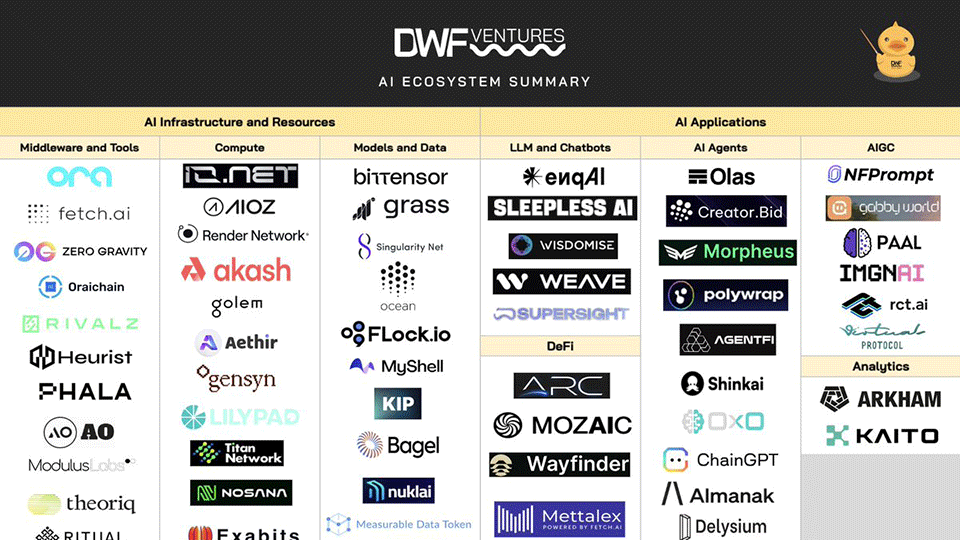
- Details
With Nvidia's earnings coming in hot yesterday, it is clear that demand for compute is higher than ever. Attention is turning towards AI x Crypto projects, ushering in a new realm of incentivisation for AI.
Here's an overview of the current landscape.
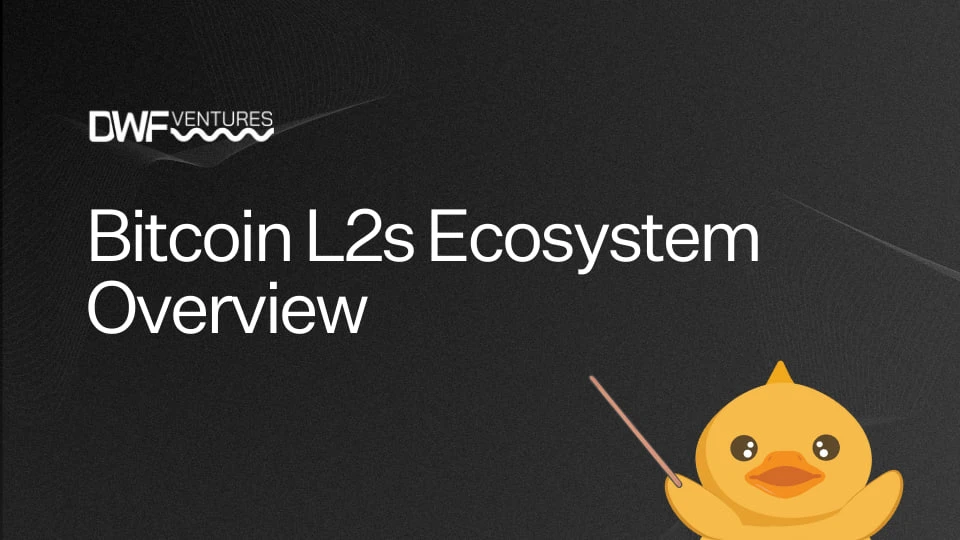
- Details
In addition to the emergence of Ordinals, the Bitcoin Layer 2 (L2) ecosystem has been evolving rapidly. To keep you up to date, DWF Ventures compiled insights on the latest developments and traction across 23 BTC L2 projects, 13 of which are planning the launch of their tokens in the foreseeable future:
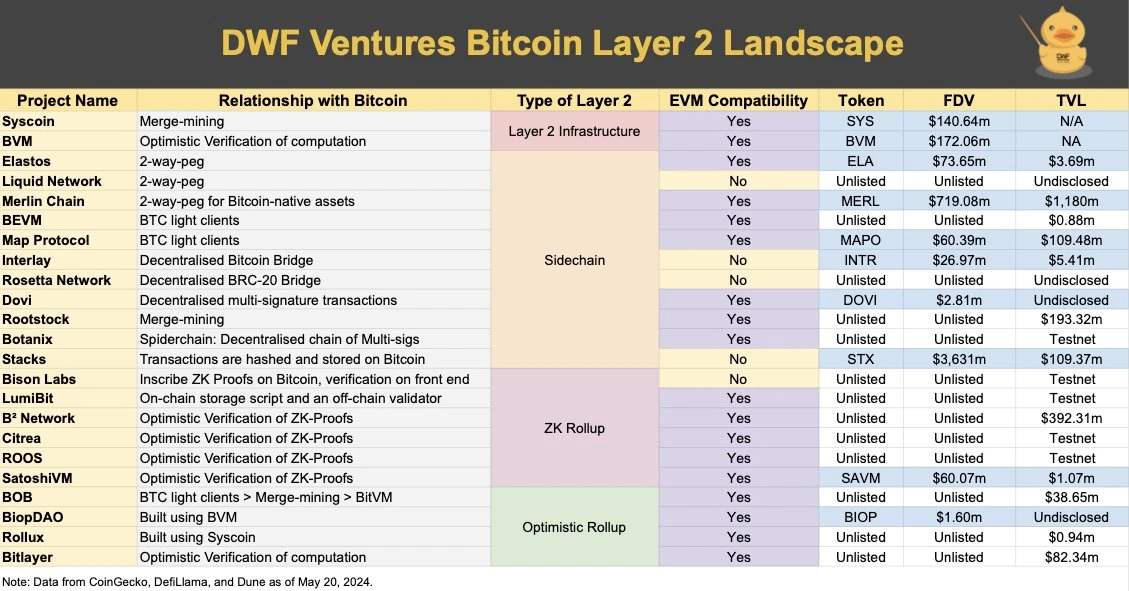
This article delves into the classification of BTC L2s and examines Bitcoin’s scalability journey to draw conclusions about their potential to enhance the ecosystem around the first cryptocurrency.
Issues With Scaling Bitcoin
The blockchain trilemma—scalability, decentralisation, and security—has challenged early “monolithic” blockchains like Bitcoin and Ethereum. Both platforms prioritised decentralisation and security, aligning with the core philosophies of blockchain technology, but this came at the cost of scalability in their early stages.
However, it has been especially challenging to create viable Layer 2 (L2) solutions for Bitcoin, since its limited scripting capabilities make it difficult to implement complex smart contracts required for technologies like rollups or sidechains. Security remains a major concern, as ensuring trust-minimised and censorship-resistant off-chain transactions without introducing centralisation risks is complex.
Despite these challenges, several classes of L2 solutions gradually emerged as the Bitcoin protocol has been steadily upgrading.
Sidechains
Sidechains became one of the earliest and, subsequently, primary solution for scaling Bitcoin, designed to enhance functionality, to being DeFi and smart contracts to the first cryptocurrency’s protocol. Projects like Liquid Network and Rootstock (RSK) allow Bitcoin interoperability through mechanisms like two-way pegs and cross-chain bridges, so BTC could be transferred and utilised within programmable environments.
However, sidechains do not fully inherit Bitcoin’s decentralisation and security layers, as they rely on their own consensus mechanisms: Liquid uses a federated model, while RSK employs merge mining with Bitcoin miners. The latter is especially notable technology intended to better align scalability with security.
Merge Mining Explained
Merge mining allows Bitcoin miners to extend their computational power to secure additional blockchains while reusing Bitcoin’s Proof-of-Work consensus, providing enhanced security without additional energy costs.
Sidechains Rootstock and Syscoin, for example, leverage merge mining to create a secure data availability layer, further serving as a foundation for L2 solutions like Rollux L2, which benefit from Bitcoin’s security while offering scalable smart contract functionality. This approach provides miners with additional incentives and enhances the resilience of secondary blockchains against attacks.
However, challenges such as miner apathy and governance centralisation persist, as merge-mined chains do not fully inherit Bitcoin’s decentralisation model. Despite these limitations, merge-mining presents a viable way to extend Bitcoin’s security to new applications in DeFi, NFTs, and enterprise solutions, with ongoing advancements aimed at improving miner participation and long-term sustainability.
Approximately half of Bitcoin miners were involved in securing Syscoin's infrastructure at the end of March 2024. Although a significant number, it raises the question: is this level of security sufficient? In Ethereum’s case, rollups seem to be the premier way to scale a blockchain, as proofs are posted and secured by the entire network.
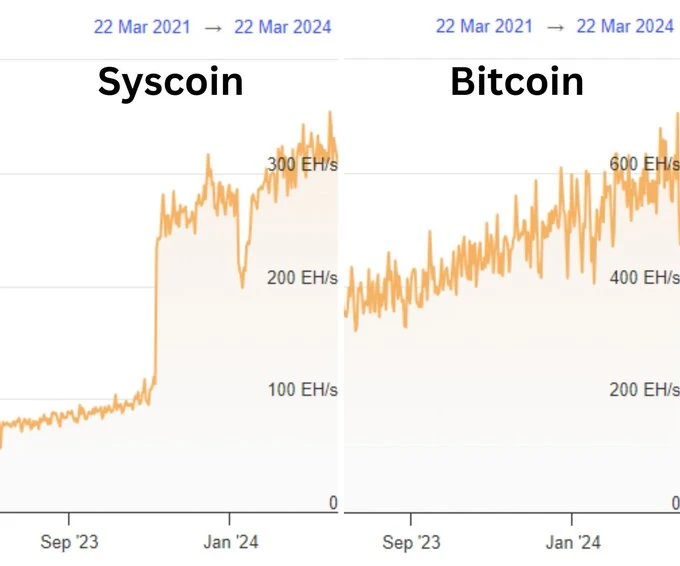
BitVM in Bitcoin Rollups
Ethereum has made strides in scalability with rollups, protocols that process transactions off-chain yet verify them and post their proofs in the base layer. Because of Bitcoin’s Script language, the same design would lack the capability to verify proofs. This limitation has been addressed with the recent introduction of the Bitcoin Virtual Machine (BitVM).
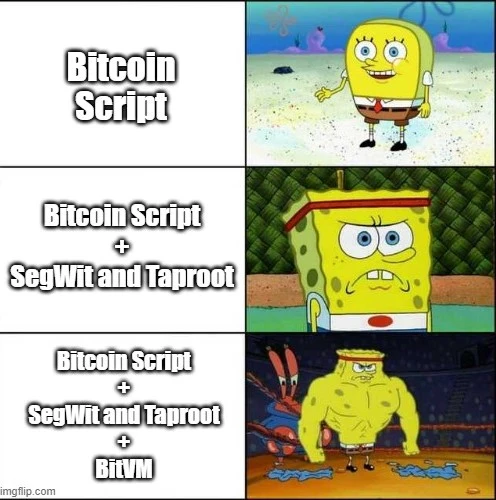
BitVM introduces a novel way to verify computations on Bitcoin without requiring a network fork (which is needed for major protocol upgrades). It achieves this by representing NAND logic gates within Bitcoin’s existing Script language. NAND logic gates are considered universal logic gates because they can perform any other logic gate function.
Through BitVM, computations can be verified optimistically rather than being executed directly on Bitcoin. This enables optimistic rollups, as seen with projects like BitLayer Labs, and allows the optimistic verification of zero-knowledge (ZK) proofs. Projects like Citrea and SatoshiVM leverage BitVM to implement these capabilities.
Alternative Approaches to Scaling Bitcoin
Other Bitcoin rollups, such as BSquared Network, Bison Labs, and LumiBit L2, have developed their own methods for settling computation verification on Bitcoin without specifically using BitVM.
BSquared Network, for example, focuses on optimising Bitcoin’s data anchoring capabilities to enable efficient rollup settlements, while Bison Labs offers hybrid models that blend on-chain and off-chain verification to enhance performance. LumiBit L2, on the other hand, utilises cryptographic proofs and compression techniques to validate transactions off-chain before anchoring them to Bitcoin, improving throughput while minimizing fees.
The Future of Bitcoin L2s
With the potential for further development of L2 solutions, Bitcoin’s role as both a secure and scalable base layer will likely continue to strengthen.
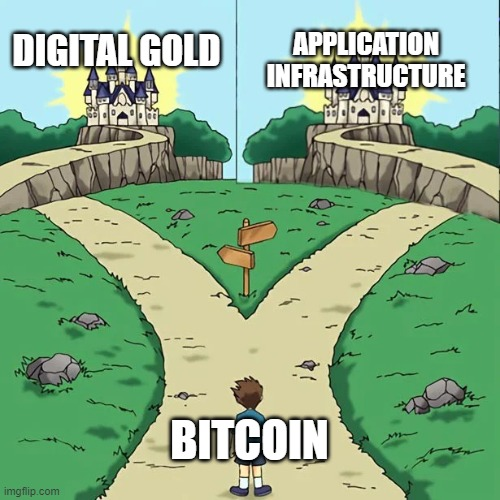
Varying approaches to improve Bitcoin’s scalability and functionality reflect the broader trend of adapting rollup technology, originally popularised in Ethereum, to Bitcoin’s more limited scripting environment.
Unlike Ethereum rollups, which benefit from the flexibility of the Ethereum Virtual Machine (EVM), Bitcoin rollups must overcome challenges posed by Bitcoin’s minimalistic and security-focused design, relying on technologies like ZKPs, fraud proofs, and multi-signature schemes to achieve trust-minimised scalability.
If you are developing a Bitcoin L2 solution in the space, don’t hesitate to contact DWF Ventures, to discuss potential opportunities for partnering with our crypto venture capital firm.
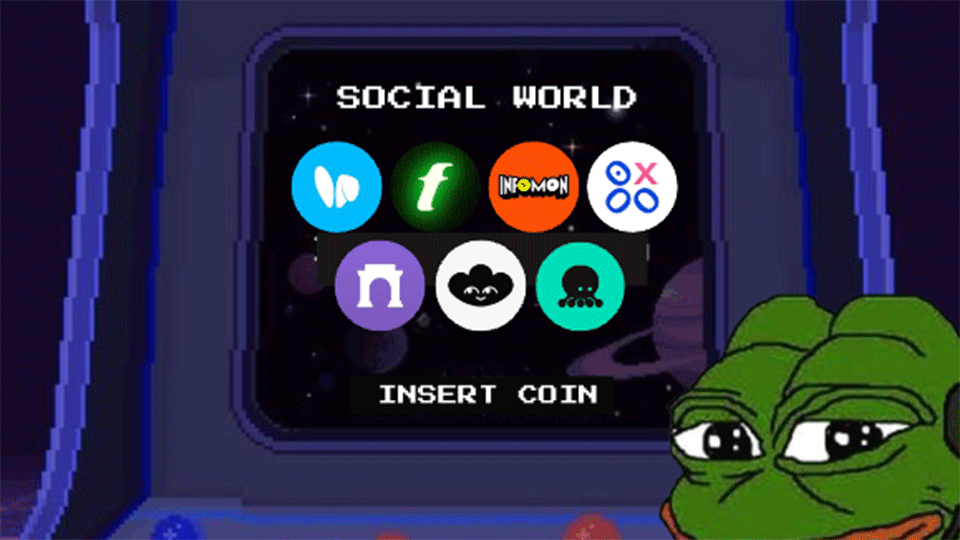
- Details
At DWF Ventures, we are optimistic about the future of SocialFi, despite the challenges that lie ahead. Earlier, we elaborated on the potential of SocialFi for solving the flaws of popular social networks created in the Web2 era. In addition, we covered the decentralised social networks (DeSoc) and the corresponding protocols, specifically Lens Protocol and Farcaster.
The launch of FriendTech in 2023 was a turning point for the development of the SocialFi sector. By 2024, the pace of innovation in this space had been expedited, with many new breakout applications emerging and changing the way social interactions and financial incentives intertwine. DWF Ventures analysed some of the top candidates for disrupting SocialFi in the next months.
What is SocialFi?
SocialFi, a term combining “social” and “finance,” connects users within the blockchain ecosystem by merging community engagement with financial incentives. SocialFi protocols often drive user activity through mechanisms such as speculation and rewards.
Broadly, SocialFi projects can be categorised into those driven by financial incentives, those focused on delivering utility, and those centered on infrastructure development. Each category plays a unique role in the ecosystem, but financially-driven protocols like FriendTech have gained particular attention due to their explosive growth.
Financially-Driven Protocols
Financially-driven protocols like FriendTech have gained particular attention due to their popularity. FriendTech exemplifies a component of economic incentives in social interaction by allowing creators to monetise their content and earn a share of the platform’s fees. Its success in 2023 and continued momentum in 2024 were largely due to innovative techniques such as points systems, bonding curves, and referral mechanisms.
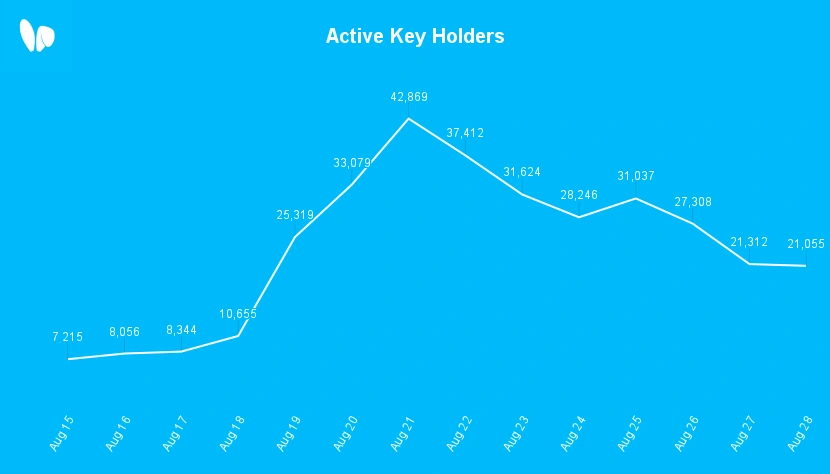
These approaches not only fueled virality but also encouraged retention among users. By 2024, FriendTech had solidified its place in the SocialFi landscape, with approximately 20,000 key holders actively engaging daily. This level of activity demonstrated the potential of SocialFi protocols to create sustainable ecosystems that go beyond traditional social platforms.
A notable example from 2024 was Fantasy Top, which added a gamified dimension to SocialFi through features like cards and tournaments. Launched in May 2024, Fantasy Top outperformed expectations, generating over $10.29 million in fees within its first ten days, compared to FriendTech’s $4.22 million over the same timeframe. Both platforms illustrated the ability of SocialFi to not only drive user adoption but also generate substantial revenue.
Utility-Driven SocialFi Protocols
In particular, utility-driven SocialFi protocols stand out for their focus on accessibility and functional value. Unlike financially-driven models, these protocols typically require less upfront capital and prioritise user-centric use cases.
For instance, beyond crypto-enabled use cases like token-gated chats and identity verification, we are excited about protocols challenging traditional platforms. A notable example is Infomon, which decentralises algorithms through a gamified experience. Users interact with AI pets that train their personal algorithms by “feeding” them tweets. This innovative approach surfaces better content for each user, reduces noise, and boosts visibility for small creators.
Similarly, 0xPPL redefines the “social” experience for crypto natives by merging traditional social aspects with on-chain data, presented in an intuitive social feed. This unique blend enhances readability and makes on-chain actions more accessible, creating a bridge between decentralised technology and familiar user experiences.
Infrastructure-Driven Protocols
Infrastructure forms the backbone of the SocialFi ecosystem, enabling seamless interactions and fostering growth. Protocols like Farcaster and Lens Protocol have laid the groundwork for development in the SocialFi space. For example, Farcaster’s “Frames” feature, launched in February 2024, captured the attention of the crypto community with over 20,000 daily active users shortly after launch. These frameworks have enabled the creation of enhanced use cases and inspired a new wave of builders.
As the number of SocialFi networks grows, interoperability has become increasingly important. Tools like Tako Protocol’s SDK enable builders to achieve cross-network content curation and monetisation. Other crypto projects such as Jamfrens are leveraging Tako to create creative, social-network-agnostic applications that further enrich the ecosystem.
Challenges and Future Outlook
Despite its limited success, the SocialFi sector faced significant challenges in 2024. A key issue was the increasing barriers to entry as user bases grew. While initial accessibility drove adoption, rising costs for new participants often deterred long-term engagement. Additionally, users remained hyper-focused on airdrops and short-term rewards, prioritising immediate returns over the platform's intrinsic value. This speculative behavior raises questions about sustainability and whether financial incentives alone could maintain user interest.
The future of SocialFi will depend on its ability to address these challenges. Sustained growth will require a shift from speculative models toward ecosystems that deliver tangible utility and lasting value. We anticipate the rise of more diverse applications blending social functionality with innovative financial incentives, along with strategies aimed at fostering long-term engagement and retention.
Conclusion
New user-faced protocols like FriendTech and Fantasy Top showcased the immense potential of SocialFi in 2024, while utility and infrastructure-driven projects, including Infomon and Farcaster, highlighted the importance of accessibility and interoperability for a new generation of social networking solutions.
The focus of SocialFi is expected to shift toward the building of ecosystems that balance financial incentives with long-term value, paving the way for a more robust and inclusive future in blockchain-based social networks and its interactions.
At DWF Ventures, we remain enthusiastic about SocialFi. If you’re working on something interesting in this space, connect with DWF Ventures to discuss potential opportunities.
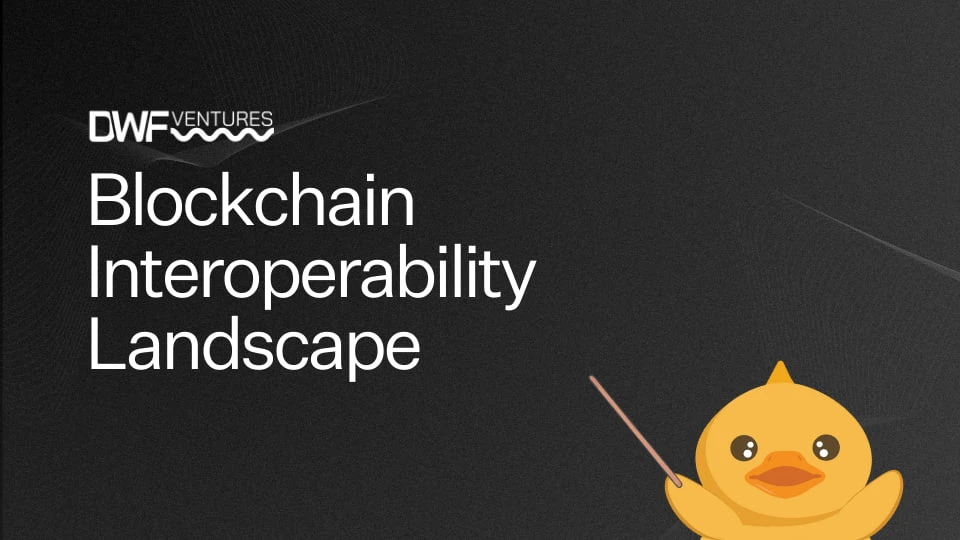
- Details
As LayerZero Labs prepares to launch and airdrop of its ZRO token later in May 2024, the spotlight on interoperability within the blockchain space has intensified.
Interoperability plays an important role in the growth of blockchain ecosystems by enabling seamless communication and transactions across networks. In this article, DWF Ventures dives into the leading players, their network types, scalability, adoption metrics, and decentralisation strategies.
Leading Players in Blockchain Interoperability
The blockchain interoperability space features a handful of protocols, each offering unique approaches to solving cross-chain connectivity challenges. Here are the top contenders:
- Axelar Network.
- LayerZero Labs.
- Wormhole.
- Hyperlane.
- deBridge Finance.
- Chainlink.
- Particle Network.
- THORChain.
- Celer Network.
- Analog.
These protocols are building new ways for cross-chain interactions, crucial for the long-term development of the DeFi space and blockchain industry in general. Below, you can see a comparison chart for these projects, composed by DWF Ventures:
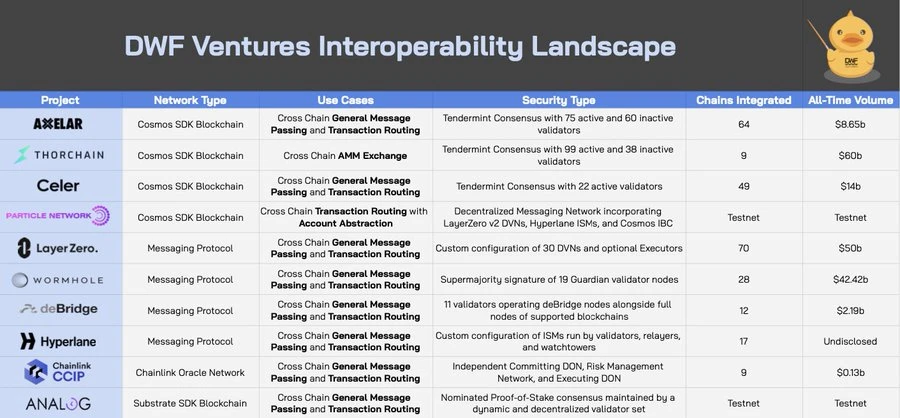
Network Types
Interoperability solutions are categorised based on the network types they operate on, including:
- Cosmos SDK Blockchain.
- Messaging Protocols.
- Chainlink Oracle Network.
- Substrate SDK Blockchain.
Let’s take a closer look at each network type below.
Cosmos SDK Blockchain
Although a Layer 1 blockchain, Cosmos provides a modular framework for building interoperable blockchains within its ecosystem, enabling secure interchain communication through the Inter-Blockchain Communication (IBC) protocol. Cosmos-based solutions, such as Axelar, employ IBC to provide trustless and decentralised cross-chain messaging, allowing assets and data to move fluidly across independent chains while maintaining sovereignty.
Messaging Protocols
Messaging protocols focus on facilitating cross-chain communication by relaying messages between different blockchain networks without requiring direct connectivity. Solutions like LayerZero and Hyperlane utilise advanced security models such as ultra-light nodes and modular security configurations to ensure reliable message delivery.
The primary feature of messaging protocols is enabling seamless interaction between smart contracts on different chains, which enhances composability across ecosystems.
Chainlink Oracle Network
Chainlink built a decentralised oracle network that opens up flows of off-chain data into on-chain environment and smart contracts, also providing cross-chain capabilities via Chainlink CCIP (Cross-Chain Interoperability Protocol).
Chainlink oracles ensure accurate data transfer across blockchains by aggregating multiple data sources and providing tamper-proof feeds, which is critical for decentralised finance applications and enterprise integrations.
Substrate
Developed by Parity Technologies, Substrate is a flexible framework for creating customised blockchains within the Polkadot ecosystem. Substrate-based chains can interoperate via Polkadot’s Relay Chain, which offers shared security and cross-chain messaging capabilities through the Cross-Consensus Messaging Format (XCM). This framework allows developers to build tailor-made chains while benefiting from Polkadot’s interoperability features.
Cross-Chain Scalability: Hub and Spoke vs. Point-to-Point
Cross-chain scalability is fundamental for blockchain interoperability, determining the efficiency and adaptability of multi-chain solutions. Two primary architectural designs dominate the space, each with distinct trade-offs in terms of scalability, complexity, and flexibility.
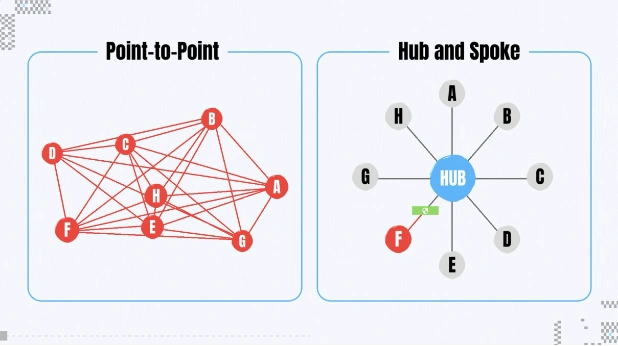
Hub and Spoke Model
This model centralises cross-chain communication through a single hub that serves as the intermediary for all connected blockchains. Several projects such as Axelar Network adopt this approach, allowing new chains to integrate by establishing a single connection to the hub, rather than requiring multiple direct links to other chains.
The Hub-and-spoke model is particularly beneficial for enterprise-grade apps that require robust and streamlined connectivity. Scalability is enhahced by reducing the number of required connections and simplifying integration efforts. At the same time, the model introduces a single point of dependency that is a hub.
Point-to-Point Model
In contrast, the point-to-point model establishes direct communication channels between separate blockchains without relying on a central gateway. This approach, itilised in protocols such as LayerZero and Hyperlane, employs this architecture to enable peer-to-peer interactions between chains.
An obvious advantage of the point-to-point model is flexibility: blockchain protocols establish custom, application-specific connections, providing more control over data flow and security on a per-connection basis. However, as the number of connected chains increases, the number of connections grows exponentially (e.g., 50 connections are needed to set up a network of 10 blockchains), complicating network management. Overall, this model fits dapps such as cross-chain DeFi protocols and Web3 gaming platforms that require real-time transactions.
Which Cross-Chain Scalability Model is Better?
Comparing actual protocols, Axelar’s Hub and Spoke design offers superior scalability due to a single-point integration and reduced complexity of multi-chain interactions. Conversely, the point-to-point model used by LayerZero and Hyperlane would require more inter-blockchain connections and routes for achieving full connectivity. Read more about this verdict in Oxpostman’s analysis.
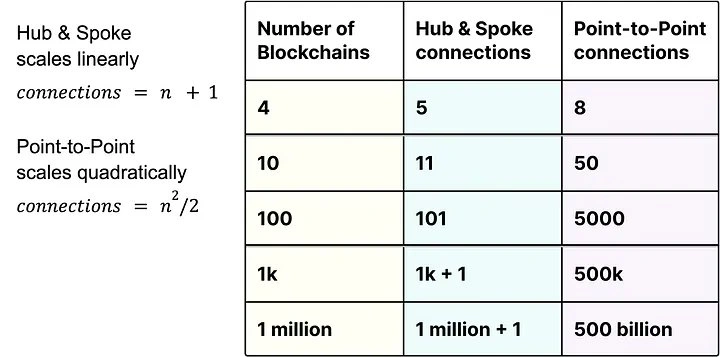
Adoption: Who’s Leading?
When it comes to what blockchain interoperability solution is more populr, judging by the volume of on-chain transactions and the sizes of network graphs, Axelar Network, LayerZero Labs, and Wormhole lead the race. In particular, as of May 14, 2024, Axelar has processed more than $8.66 billion worth of cross-chain transfers and 1.85 million transactions for 64 blockchains.
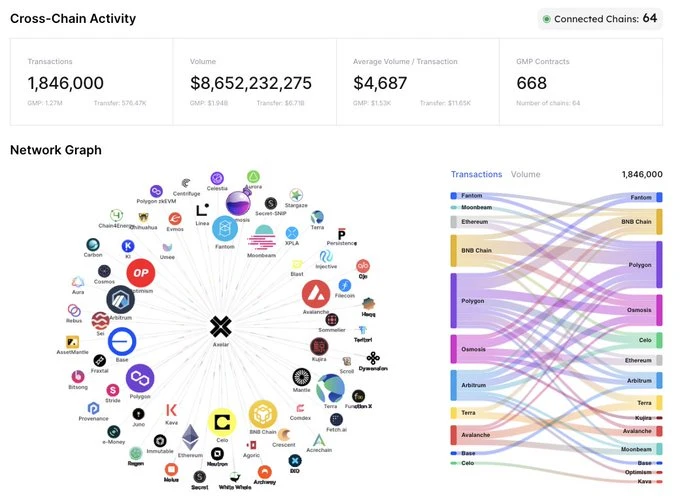
Decentralisation: Trust-Minimised Protocols
Decentralisation is vital for blockchain interoperability, providing the required security and resilience, especially in protocols that tend to centralise. In cross-chain communication, trust-minimised protocols prioritise decentralisation to safeguard against single points of failure.
Among the leading interoperability solutions, Axelar Network stands out with its Delegated Proof-of-Stake (DPoS) consensus mechanism, supported by a network of over 75 active validator nodes. This structure distributes control across multiple validators, each responsible for securing the network and validating cross-chain transactions.
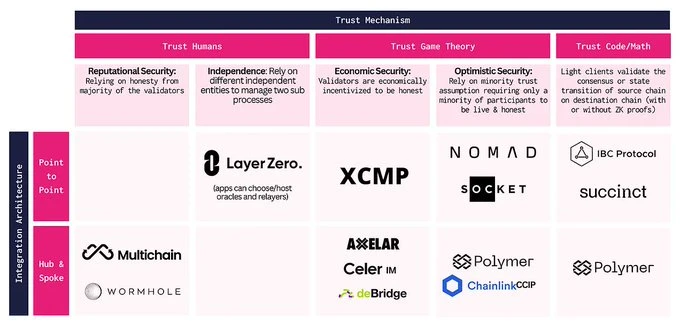
In comparison, LayerZero and Wormhole mechanisms are less trust-minimised. Currently, LayerZero has 30 decentralised verifier networks (DVNs) with unique configuration, while Wormhole has a network of 19 Guardian nodes with super majority signature (e.g. 13 out of 19).
Overall
Blockchain interoperability breaks silos between chains and enables more connections, which impacts the economic activity in DeFi and the broader crypto market. The current cross-chain stack is represented by various network types and connection models, creating a diverse range of solutions like Axelar, LayerZero, and Wormhole.
We expect to see continued advancements that enhance cross-chain communication, improve security, and democratise access to decentralised technologies.
As the crypto venture capital fund, we remain committed to supporting the growth of the blockchain interoperability sector. If you are building in this space, contact DWF Ventures here to explore opportunities in this space!
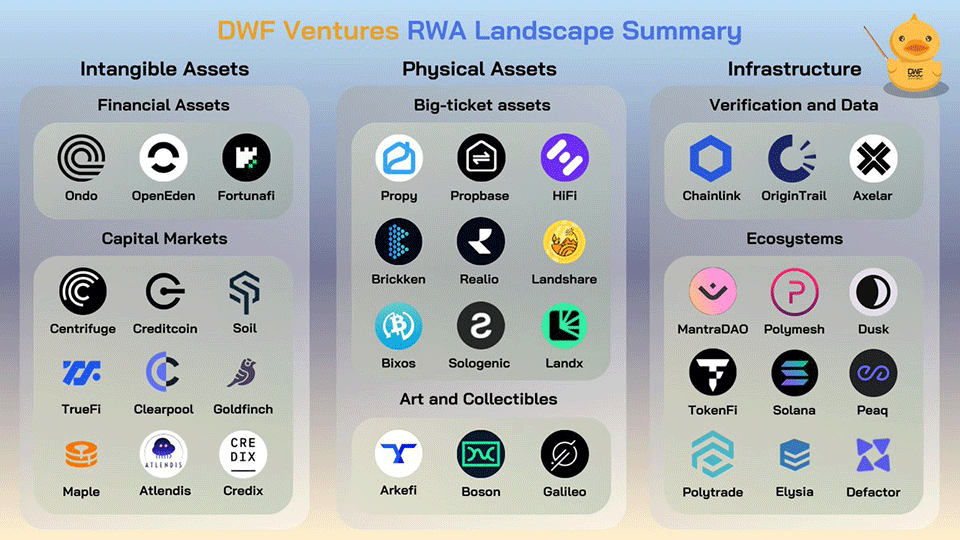
- Details
As the Real World Asset (RWA) narrative gains momentum, DWF Ventures has compiled a list of notable projects driving progress in this space.
In this thread, we will dive deeper into the different categories and protocols in the RWA space!

- Details
The surge of Xterio Games has been hard to miss in the gaming community, and their flagship game, Overworld, is stealing the spotlight.
With its unique blend of free-to-play accessibility, cross-platform integration, and Web3 features, Overworld is setting a new standard in the gaming landscape. DWF Ventures gathered all the intel you need to know about this GameFi project.
Introduction to Overworld
Overworld is a free-to-play, cross-platform sandbox RPG set in a Web3-enabled fantasy world. It emphasises social experiences, collective storytelling, and immersive multiplayer gameplay. Players can explore a vast, evolving realm filled with intriguing characters, captivating locations, and utility-driven collectibles.
This GameFi project is incubated by Xterio Games, a leading Web3 gaming company backed by industry giant Binance Labs. With a strong foundation and a big creative vision, Overworld has been attracting attention and gaining traction steadily among both gaming enthusiasts and the blockchain community.
Gameplay and Features
At its core, Overworld focuses on building a socially engaged environment. Players can create collective stories while leveraging the platform's utility-driven NFTs. These collectibles then enhance gameplay and create unique in-game experiences.
The game operates on a native token called $MNCT (Manacite Token), which powers in-game activities and the ecosystem.
Traction and Community Engagement
Overworld has shown impressive traction since its launch:
- Over 10,000 ETH trading volume on its NFT marketplace.
- Incarna NFT collection sold out in under 1 minute.
- More than 10,000 active Discord members actively participating in the community.
These metrics highlight Overworld’s growing popularity and its ability to attract a loyal and engaged player base.
The Incarna NFT Collection
In December 2023, Overworld introduced the Incarna NFT collection, which featured a total supply of 6,000 NFTs. The collection sold out in less than a minute, reflecting the project's overwhelming demand and strong market presence.
These NFTs not only represent valuable in-game assets but also grant holders additional benefits across the Xterio ecosystem, adding further utility and appeal.
Xterio Ecosystem
The integration between Overworld and the broader Xterio ecosystem is another factor driving its success. For instance:
- Incarna holders received bonus points in the PalioAI airdrop campaign.
- The Forge SocialFi campaign rewarded Incarna holders with bonus multipliers.

This enhances the value proposition of Overworld’s NFTs and strengthens the ecosystem’s interconnected appeal.
Upcoming NFT Collections
Building on the success of the Incarna collection, Overworld recently announced plans for additional NFT series, including:
- Domains.
- Shop Keepers.
- Forge.
- Female Incarna.
- Great Spirits.
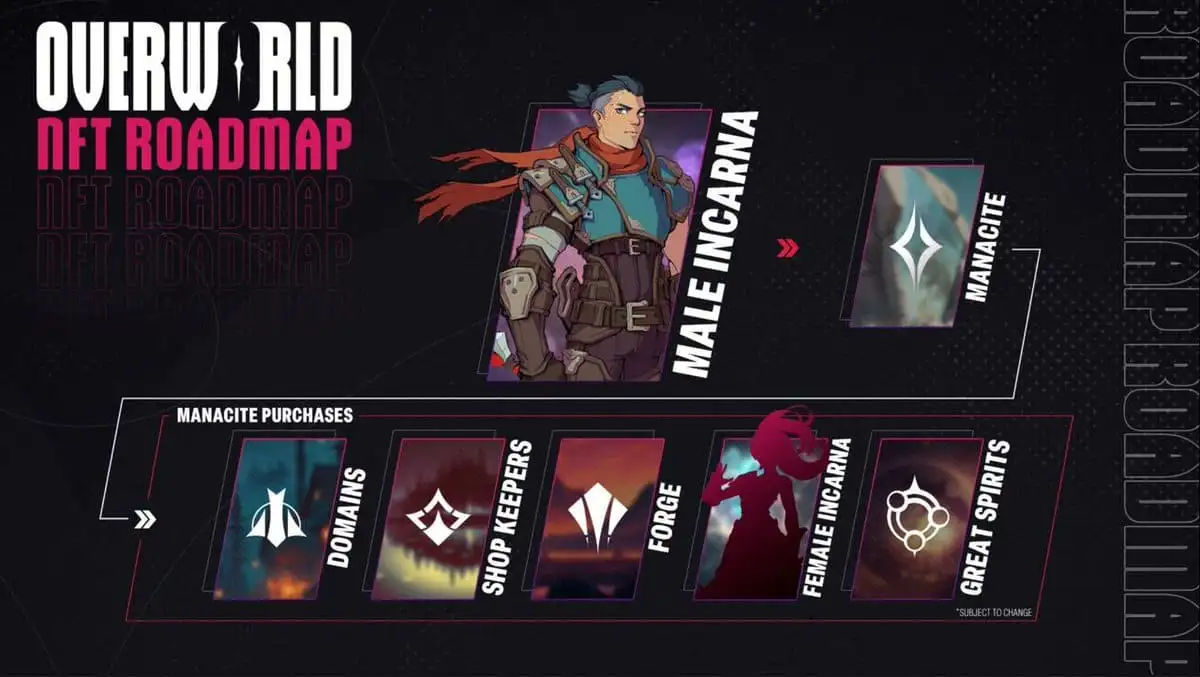
These collections aim to further enrich the Overworld gaming experience and expand opportunities for players to engage in this interactive universe.
The Future of Overworld
As Overworld continues to grow, it exemplifies the potential of Web3 gaming to improve how players interact with games and digital assets. With a thriving community, interactive gameplay, and a robust ecosystem, Overworld holds true to the promise of a truly interactive and fun blockchain-enabled gaming experience.
As an active crypto venture capital fund, DWF Ventures invested in Overworld, and will continue to observe the project’s development closely.
Are you working on a GameFi or a Web3 gaming project? Feel free to reach out to DWF Ventures to chat about partnership opportunities.
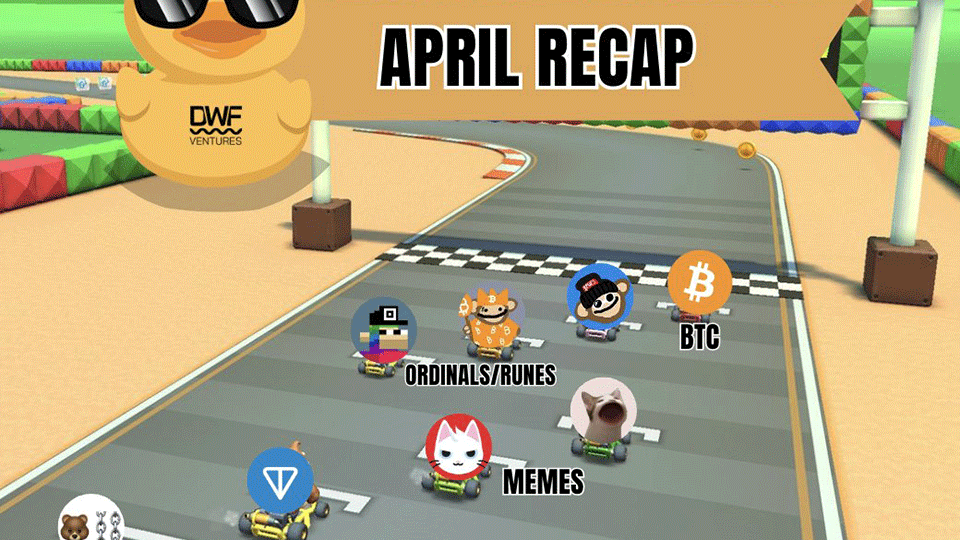
- Details
April 2024 had been an eventful month in the world of crypto. From conferences to shifts in market sentiment and the pivotal developments like the Bitcoin halving, it was definitely a month to remember. Read more in a brief summary by DWF Ventures.
Conference Takeaways
Our first stop was the Hong Kong Web3 Festival, where we witnessed the growing potential for Hong Kong to emerge as the next major crypto hub.
With the Hong Kong government fostering a crypto-friendly environment, including the launch of spot Bitcoin ETFs, the region continues to position itself as a leader in digital asset adoption.
Next, we headed to TOKEN2049 in Dubai, which highlighted the city's flourishing crypto ecosystem. Dubai is already home to a thriving community of builders, and the potential for further growth is immense.
During the event, DWF Labs renewed its collaboration with DMCC Crypto Centre as a testament to our bullish outlook on the region. We remain committed to supporting builders and fostering innovation in Dubai.
The Bitcoin Halving
A monumental event occurred on April 20th at 12:00 AM UTC: the Bitcoin halving, which reduced block rewards for miners from 6.25 BTC to 3.125 BTC.
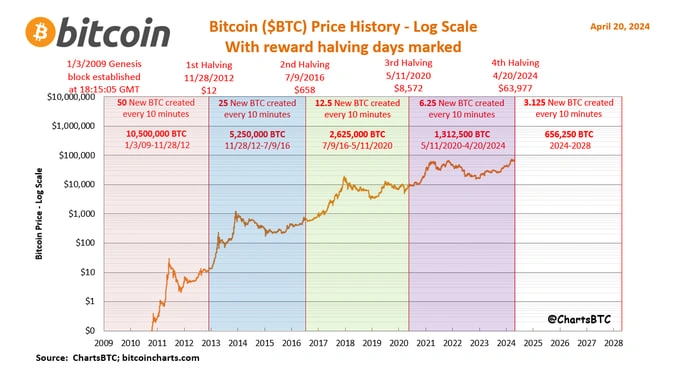
The halving marks a significant milestone in Bitcoin’s monetary policy, as the reduced growth in supply often correlates with an increase in demand and price. With institutional interest fueled by spot Bitcoin ETFs, the sentiment around BTC remains bullish.
Ordinals and Runes
Beyond institutional demand, Bitcoin's ecosystem has seen growing activity around Layer 2 protocols (L2s), in particularly those building using the Ordinals and the Runes Protocol. Ordinals are “NFT-like” digital objects stored on the Bitcoin blockchain that occupy more block space, leading to increased transaction fees. Their popularity has driven new use cases for Bitcoin beyond its traditional role as a store of value.
Bitcoin Layer 2s
With demand for Bitcoin scaling solutions on the rise, L2 solutions are helping expand Bitcoin’s functionality in decentralised applications. We expect many protocols to launch or migrate to Runes after the halving.
Despite concerns around fragmentation and lack of unified standards, we believe that this lays a strong foundation for enhanced use cases and will see mass interest similar to when BRC-20 tokens were launched.
Memecoins: The Power of Community Engagement
Memecoins have proven their staying power as effective tools for community engagement. They are increasingly being used as go-to-market strategies for projects and ecosystems. For example:
- Hyperliquid airdropped $PURR meme tokens to its users, rewarding loyalty.
- Berachain has adopted memes as a core marketing strategy, capturing market mindshare.
While memecoins are often seen as non-fundamental plays, their ability to involve community makes them a powerful force in the current crypto cycle.
Rising Attention on Alternative Layer 1s
Alternative L1 blockchains like TON and Berachain are gaining momentum.
Specifically, TON Blockchain integrated USDT as a native stablecoin, enhancing liquidity and use cases on-chain. Coupled with its synergy with Telegram’s user base, TON looks ready to unlock significant growth.
In the meantime, Berachain and ecosystem, natively employing NFT and DeFi, has attracted a significant attention after a new funding round that reached an impressive $100 million mark.
These developments strengthen the alternative L1s’ competitive position compared to Ethereum.
Other Emerging Narratives and Events to Follow
As the market evolves, attention is shifting to emerging trends such as AI and DePIN (Decentralized Physical Infrastructure Networks), restaking, and SocialFi. Key events expected in Q2 include:
- The launch of FriendTech V2 on April 29th, stirring speculation about a token launch.
- Increased activity around Fantasy Top and Lens Protocol, further fueling speculation about token releases.
- Launches of EtherFi and Renzo Protocol tokens, which are driving interest in LRT protocols like KelpDAO, Puffer Finance, and Swell Network.
- Large-scale AI/DePIN projects such as ioNET and AethirCloud, which are likely to dominate the radar.
For more events that may make the waves on the crypto market in Q2 2024, check out the calendar below prepared by DWF Ventures:
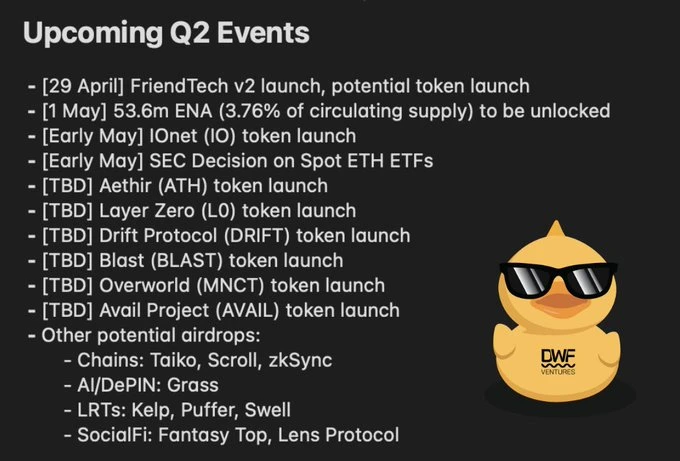
Airdrops and Market Sentiment
As market sentiment leans toward uncertainty, airdrops remain a significant driver of attention. Projects across various verticals are leveraging airdrops to engage users and build momentum. These campaigns are expected to play a leading role in shaping market dynamics in the upcoming quarter.
Conclusion
April 2024 highlighted the strenghening momentum of the crypto industry, from the Bitcoin halving to the rise of memecoins, alternative Layer 1s, and emerging narratives. The coming months promise continued changes and growth as markets continue to navigate the fast evolving trends.
As a crypto venture capital fund, we remain committed to supporting builders. Connect with DWF Ventures to discuss partnership opportunities.
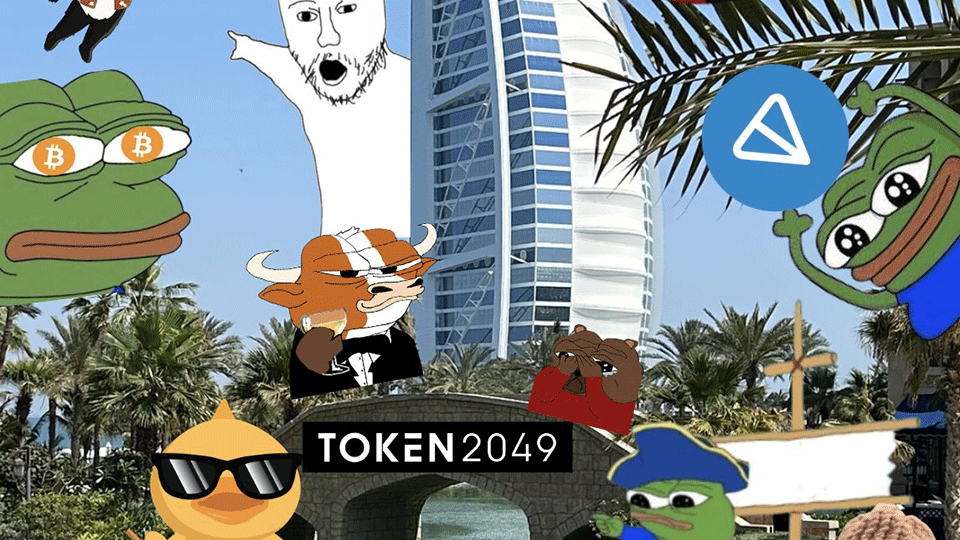
- Details
The highly anticipated TOKEN2049 Dubai has wrapped up, leaving the crypto community with the eagerness to keep building. From changing market narratives to launch announcements, the crypto conference provided a glimpse into the future of blockchain and Web3. Dive into details about what was discussed at TOKEN2049, in the recap prepared by DWF Ventures, the team of which participated in the event.
Location Significance
In recent years, Dubai has emerged as a global hub for blockchain innovation, thanks to its crypto-friendly regulations and strategic support from entities like VARA (Virtual Assets Regulatory Authority). With tax-free zones and government-backed initiatives, the region has cultivated a thriving crypto ecosystem, attracting talent and business.
We’re proud to support developments in the region. This includes the renewal of collaboration between DWF Labs and DMCC Crypto Centre, a subsidiary of the Dubai Multi Commodities Centre, which was forged just 2 weeks prior to TOKEN2049. Together, we’ve established a $5 million growth platform for Web3 businesses at the DMCC Crypto Centre, reaffirming our commitment to supporting crypto builders in Dubai.
Market Sentiments: Resilience Amid Uncertainty
Despite recent market pullbacks, the sentiment at TOKEN2049 Dubai remained optimistic. Conversations mirrored the themes observed at the Hong Kong Web3 Festival, focusing on:
- Bitcoin (BTC).
- AI and DePIN.
- Memecoins.
- Layer 1 blockchains (Berachain, Monad, TON).
- Real-World Assets (RWA).
Despite having faced challenges, the growing influence of these narratives are indicators of the crypto community’s resilience and forward-looking outlook.
Conference Turnout
The main event attracted a diverse crowd, including builders, crypto venture capital firms, key opinion leaders, and global institutions.
Major blockchain ecosystems such as NEAR Protocol, Solana, and TON also had a strong presence alongside numerous AI and DePIN projects showcased at booths.
The Rise of Memecoins
Our Managing Partner, Andrei Grachev, delivered a keynote speech on how projects and chains can navigate market narratives. He emphasised the surprising rise of memecoins, which have proven to be more than just speculative assets.
He underscored that memecoins are becoming an important strategy for blockchain networks and projects launching in the year ahead, as they offer an effective way to build communities and drive engagement.
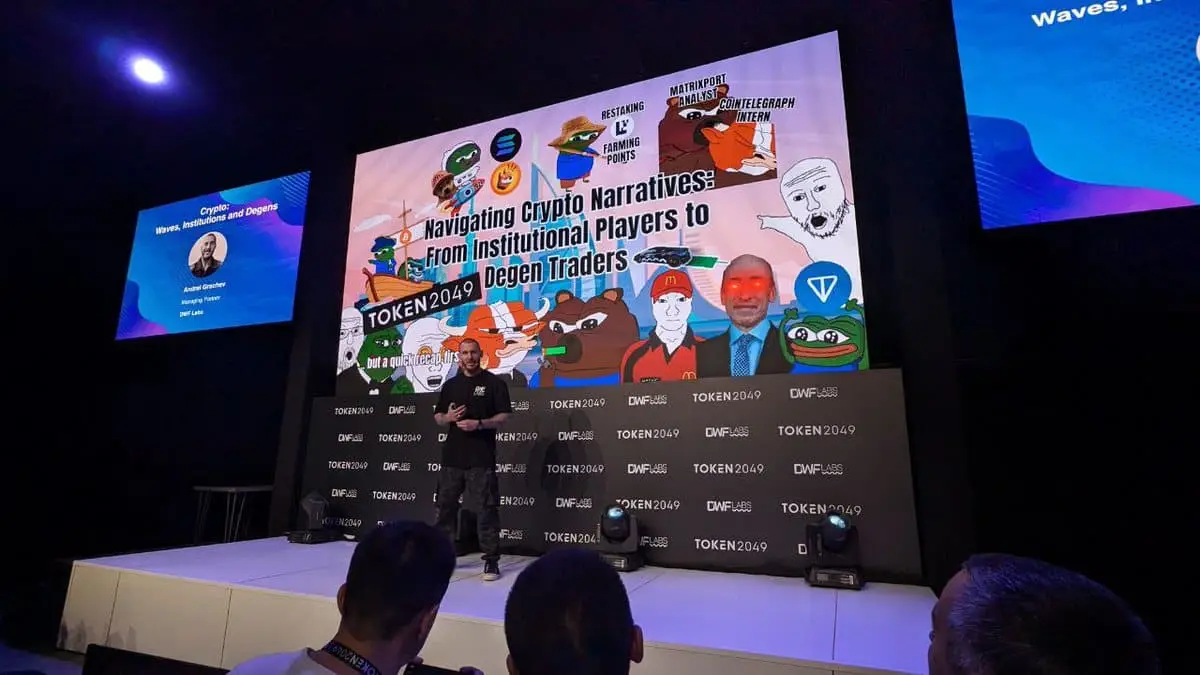
TON’s Major Announcements
One of the most notable moments at the TOKEN2049 crypto conference were announcements made by the team of the TON blockchain, which included the integration with Tether (USDT) as the native stablecoin. They also announced that incentives for the TON ecosystem will be provided to drive further adoption. Lastly, there will also be the monetisation of Telegram stickers and a creator tipping feature using TON.
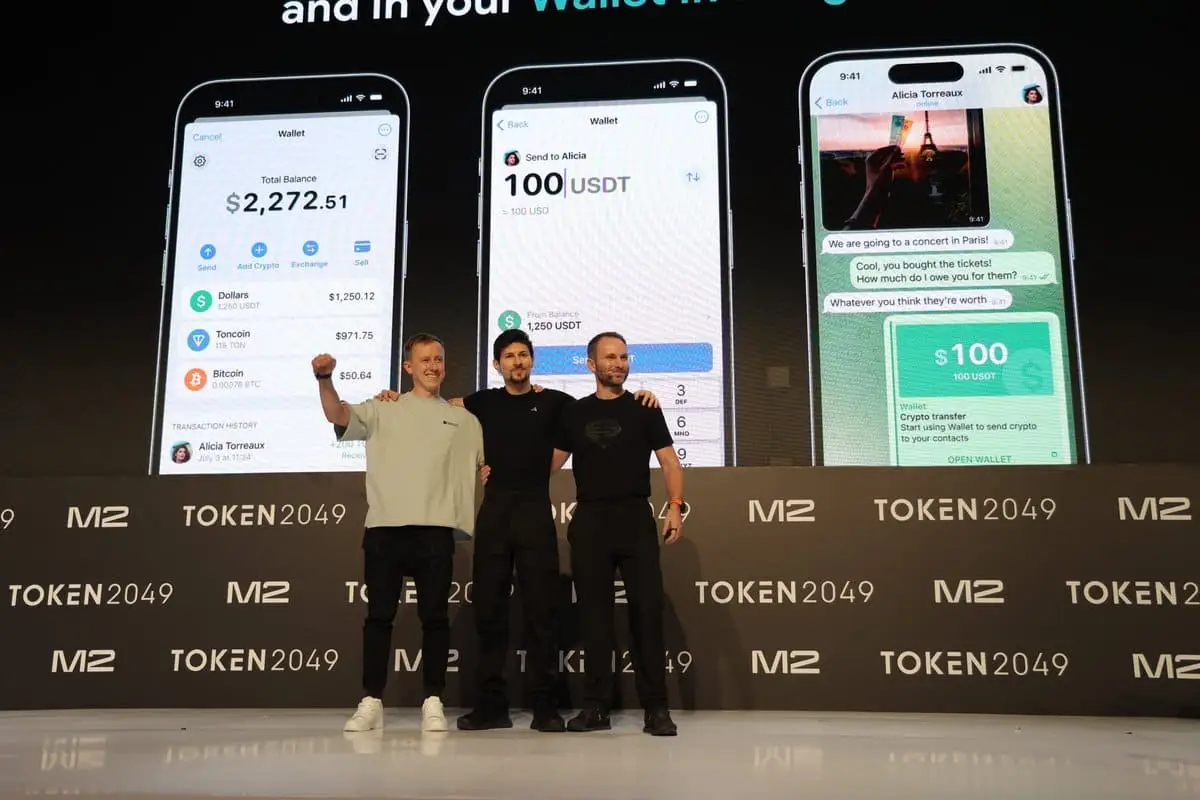
These developments showcase the collaboration between TON and Telegram, highlighting their ability to leverage a huge user base and create new monetisation avenues.
Side Events and DWF Labs Haus
The side events at TOKEN2049 Dubai were a vibrant showcase of the industry’s energy, creativity and meaningful discussions. Attendees were treated to engaging experiences such as Crypto Fight Week, K-pop performances by Triples, and the unforgettable Hasbulla NFT showcase, ensuring there was something for everyone to enjoy.
DWF Labs, which sponsored the conference, also hosted its own crypto side event DWF Labs Haus, connecting the global community that had a delight to enjoy a stunning view of the Dubai’s skyline while networking.
Amidst the entertainment, Berachain stole the show with a spectacular drone display, announcing its partnership with Google Cloud. This presentation showcased Berachain’s growing influence and was complemented by strong community activation. Events such as sports competitions and the popular Berabaddie gathering also brought like-minded individuals together, bringing meaningful connections in celebration of this dynamic ecosystem. See more here.
Discussion Around RWA
The focus on Real-World Assets (RWA) further showed the event’s forward-looking narrative. RWA-centric discussions and showcases emphasised infrastructure and asset protocols, with on-chain T-Bills gaining significant interest. These digital financial instruments were particularly appealing to both institutional and retail investors, offering a regulated and secure way to earn yield.
Bitcoin Halving in the Spotlight
Finally, the Bitcoin halving on April 19th was a recurring topic of conversations throughout the week of TOKEN2049. This milestone not only marked an important moment in Bitcoin’s monetary policy but also coincided with the launch of the Runes Protocol, “NFT-like” innovations within the Bitcoin ecosystem. The introduction of Runes has spurred increased trading volumes and further demonstrated Bitcoin’s evolving utility beyond its traditional role as a store of value.
Conclusion
The TOKEN2049 crypto conference in Dubai was not just all work and no play, it was also a moment of celebration for our achievements. DWF Labs was honored as the Best Liquidity Provider at the Blockchain Life Awards 2024.
We expect that the narratives around the Bitcoin ecosystem, memecoins, and Layer 1 blockchains will continue to drive the market in the coming months.
There’s no better time to build together. If you want to get support from a crypto venture capital fund, feel free to connect with DWF Ventures.